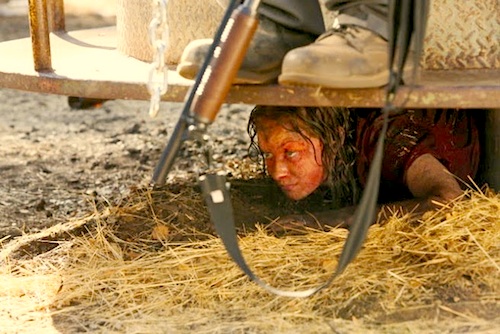By Joe Bendel. Overpopulation is an issue that can turn an ostensive philanthropist into an evangelist for draconian controls on the unwashed masses. Should we be concerned about hordes of debased people waging global battles for increasingly scarce resources? Filmmaker Jessica Yu went into her latest project expecting to find a crisis but came away with the somewhat more nuanced perspective informing her self-referentially titled documentary Misconception, which premiered at this year’s Tribeca Film Festival.
It was TED Talker Hans Rosling who first tempered Yu’s alarm and duly serves as Misconception’s guru. According to Rosling, 80% of the world’s population now live in countries with 2.5 child birthrates or less. As a result, global population growth has leveled off. The other 20% are still procreating at rates that would give Warren Buffet conniptions, but corresponding life expectancy also happens to be relatively low in those nations. That is all well and good, but if Yu really wanted to rock viewers’ worlds, she would have introduced them to the work of the late great Julian Simon.
The meat of Misconception consists of a triptych of disparate individuals whose lives have been shaped by population planning policies in some fashion. The first is by far the best. With the help of Chinese filmmaker Lixin Fan (director of Last Train Home and executive producer of China Heavyweight), Yu follows Bao Jianxin’s determined efforts to avoid becoming one of China’s “leftover men.”
The implementation has been severe, but the One Child policy has curtailed China’s birthrate dramatically. Yet, it has come at an enormous social cost. Since boys are prized above girls, many couples opt for gender-specific abortions until they have a son. Like many of his “Little Emperor” generation, Bao faces an uphill challenge in his search for a wife. The numbers are simply against him. Yet, Bao also sabotages his best chance with a quite attractive old flame, because she cannot compete with Shu Qi in his favorite film, Love.
Frankly, Yu and company only scratch the surface of the potential social instability resulting from the One Child policy. Misconception also argues part of Bao’s problem is an increasing trend amongst Chinese women to choose careers over traditional family roles, but this too might partly be a function of the entitled attitudes fostered by “Little Emperor Syndrome.”
Perhaps the most loaded segment follows Denise Mountenay, a pro-life activist, who has found her calling lobbying against legalized abortion at the UN. At least she is from Canada, because in most other respects she fits the least charitable stereotype of evangelical Christians. She is a hard charger, who has had her share of horrific experiences and undoubtedly means well, but she does not serve her cause well on-screen.

Contrasting with the ideological charge of the second segment (clearly heightened by deliberate editing choices), the third POV figure is easily the safest. Journalist Gladys Kalibbala does her best to heighten awareness of the staggering numbers of abandoned Ugandan street orphans, humanizing them in profiles and trying her best to re-connect them with extended family members. It is a noble response to a tragic situation.
There is at least one misconception in Misconception. Essentially, Rosling argues fear of a third world population explosion will increase global warming are misplaced, because it is those who live in the developed world that use the most resources. Yes, but the most precipitous increase in fossil fuel consumption is expected in India and China as they pursue aggressive electrification policies (a worthy goal), at the lowest possible cost.
In fact, you can almost feel Misconception holding back, struggling to maintain some sort of class-conscious, environmentally orthodox message. Still, it is admirable Yu was willing to re-examine her assumptions to any extent. A radically mixed bag, the inconsistent Misconception includes provocative arguments and distracting noise in nearly equal measure. For those who closely follow the work of Yu and Fan, it screens again this Saturday (4/26) during the 2014 Tribeca Film Festival.
LFM GRADE: C+
Posted on April 25th, 2014 at 11:32pm.








